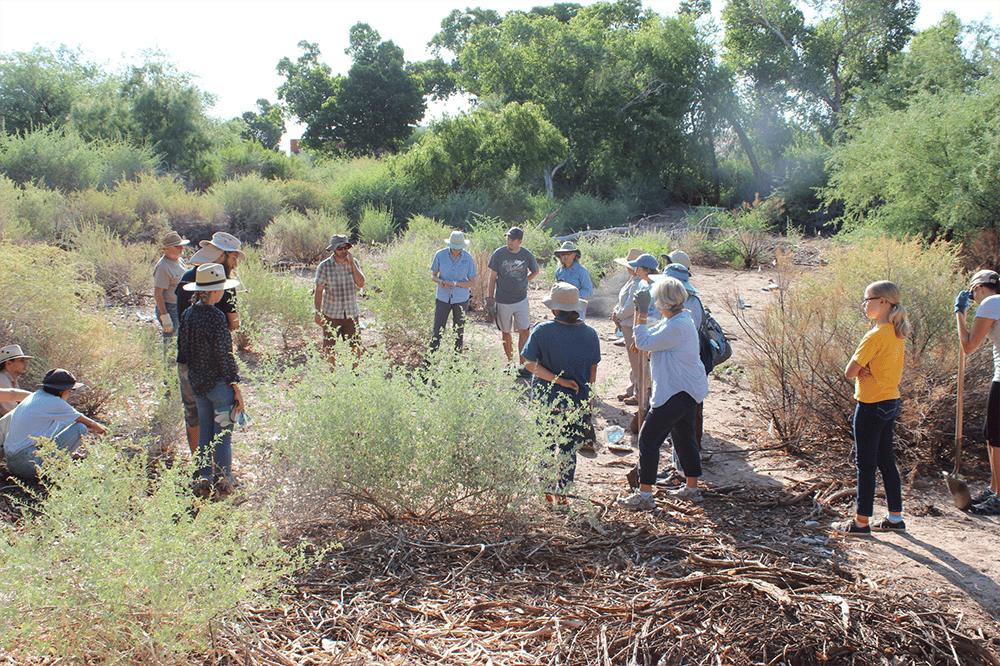Protect Birds & Their Habitats
Birding
Protect Birds & Their Habitats
Birding

Our restoration efforts are concentrated in riparian areas; along some of our region’s rivers, streams and washes. Improving habitat along riparian areas is one of the most efficient ways we can help wildlife species, since so many of them use riparian areas. A large number of bird species that are on the Audubon Watchlist (of vulnerable bird species) are ones that depend on riparian areas.
Often habitats in our riparian floodplains are degraded due to farming, grazing, groundwater pumping and erosion. Enhancing the habitat in these areas means increasing the diversity and density of native vegetation. We use standard habitat restoration techniques as well as adding innovative methods from the field of Permaculture.
All Tucson Audubon habitat restoration sites are posted no trespassing, and access is only possible during official Tucson Audubon events or by special arrangement.
What exactly is an Invasive Plant, and why should I care?
The United States Department of Agriculture defines an “invasive species” as “a species that is non-native (or alien) to the ecosystem under consideration, and whose introduction causes or is likely to cause economic or environmental harm or harm to human health”. No matter where you live, there is likely to be an invasive plant establishing a population near you, or on its way! Their seeds hitch rides in shoes, tires, trains, and boats. Invasives are sometimes sold as ornamental plants in local and big-box nurseries, and have even been introduced into our ecosystems as graze for cattle, causing landscape-scale destruction of native habitat.
If you would like to learn more about our habitat restoration projects and how you can volunteer, please contact Cally Wilken, Mitigation Program Manager.